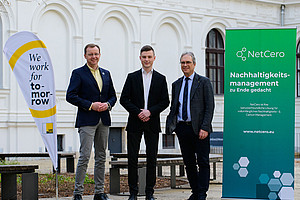zum Thema: A complete shift of perspective for the energy sector
Zeit: Donnerstag, 24. November 2016, 12:00 - 13:00 Uhr (s.t.)
Ort: SR des Wegener Center im 1. Stock, Brandhofgasse 5
Moderation: Karl W. Steininger
Herzlich willkommen!
Abstract:
Three new technologies have developed very rapidly over the last 10 years and each of these is beginning to change the energy sector completely. First, long-distance electricity transmission by high-voltage DC is used in the "Global Energy Interconnection" (Zhenya Liu) as part of the Chinese Silk Road 2 initiative. Western media downplay this Chinese initiative but the Chinese go ahead with numerous activities in all parts of the world; at present still except the Americas. China has the will, the money, the technology and the political cloud to become a dominant player in this sector. Second, battery storage allows to overcome major problems posed by the obligation for electric power companies to always meet the demand for electricity, in particular the peak load. Companies in this sector are, very suddenly, ordering large amounts of battery storage. Tesla has outlined that with 2 billion of its powerwalls (14 Terawatt hours of storage), together with photovoltaics, it could meet the global energy demand. Third, photovoltaics is now the cheapest source for electricity, at 2.9 US¢/kWh in a big new power plant in Dubai; a price that includes operation and maintenance, profits and capital costs. This is equivalent to solar electricity in Austria for less than 6 US¢/kWh. This price will fall another 50% until 2022; as is projected in road maps from, so far, highly reliable tech companies. The potential for a complete shift of the energy sector becomes apparent when these three technologies are combined; a development that will come. This could give dispatchable electricity of highest technological quality, in a highly reliable way, globally free coast for below 3 US¢/kWh. This is considerably less than half the present costs from the cheapest electric power companies for dispatchable electricity, i.e. electricity that meets actual load curves 24/7 all year. (The problem here is not the low costs of base load but the high costs of peak load). We outline a pathway for implementation of a global renewable energy system that meets 90% of global demand such that at each phase of this implementation there are groups that would achieve high profits from in phase and thus have strong incentives to go ahead. In particular, people with access to roofs, i.e. normal citizens or citizens groups and companies, would profit in the first phase. Electric power companies would greatly profit in the second phase which would bring in this important group and the politicians behind them. This pathway would allow very rapid installation of a global system thus also giving an effective answer how to cope with climate change, how to feed the increasing fleet of electric vehicles, how to support development for those 5 billion population with poor energy access and how to support citizens and companies in rich countries that have to cope with present high energy costs. The more countries participate the better for everybody, with the exception of countries at higher latitudes and correspondingly low insolation; but globally few people live in those latitudes. This pathway needs plenty of new forms of economic analyses and new mathematics. Some of these new methods will be outlined, showing their role and importance for a new energy system.





